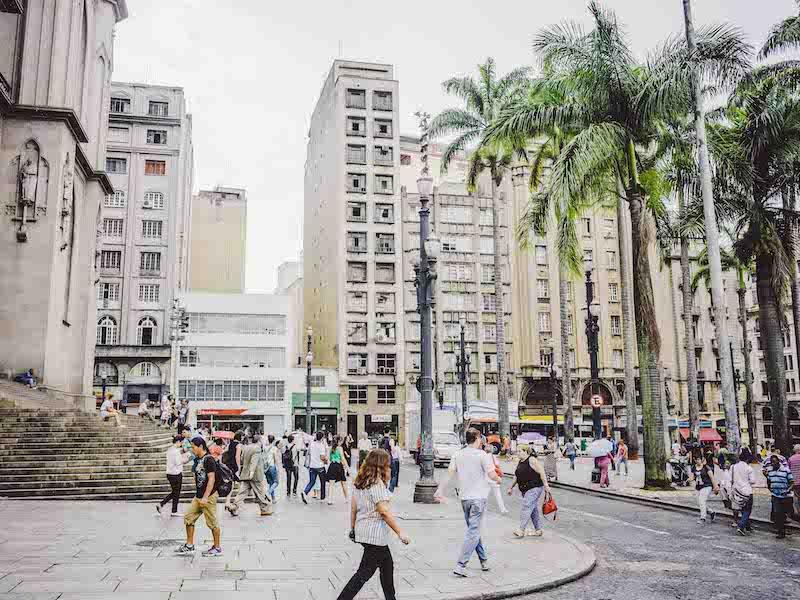“Cities without Hunger” – Urban Gardens in São Paulo

For many Brazil travelers, a stop in the famous city of São Paulo is a must. Many are overwhelmed by the size of the city on their first visit. It may happen that you need up to two hours to reach your destination within the city. São Paulo is a megacity and the number of people who move there increases every year. More than 11 million people already live in the city center alone. Due to the rapid population growth, the metropolitan area of São Paulo with its 38 autonomous cities has developed into a single huge urban complex, in which more than 20 million people nowadays live.
Food insecurity, especially for poor families, is a consequence of this rapid growth. In the precarious neighborhoods of the city, the favelas, many people cannot afford a healthy diet. Rice with beans is a typical meal. However, sufficient vitamins and minerals are not added to the body through this alimentação básica, a diet with the simplest of foods.
Urban gardens of “Cities without Hunger”
The non-profit association “Cities without Hunger” has taken on the problem. The non-governmental organization has been creating community gardens on unused public and private areas since 2004. Primarily in the eastern zone of São Paulo, which is particularly characterized by socially disadvantaged areas. The projects are sustainable and based on ecological agriculture. The aim is to enable people with little or no income to work to become financially independent. At the same time, gardening raises awareness for healthy eating.
To date, 25 community gardens have been created in which around 100 volunteer gardeners work. The volunteers and their families, all together around 600 people, can make a living from the fruit and vegetables. In special training courses, the favela residents learn the basics of agriculture as well as sales and trade.
Other Projects
In addition to community gardens, “Cities without Hunger” also promotes gardens on roofs and courtyards of schools. Public funding for school lunches is very low in Brazil. With the gardens, the canteens are able to provide the children with a balanced meal. Parents and teachers are also involved in the projects. There are currently 38 gardens.
The success of the community gardens in São Paulo made it possible to set up another project in Agudo in Rio Grande do Sul, a federal state in southern Brazil. The small town has lived mainly from tobacco production since the 1980s. Monoculture creates many problems, such as immense soil degradation. Since 2009, “Cities without Hunger” has been helping farmers in the region to switch from monocultural agriculture to organic farming.
“Cities without Hunger” is a good example for how to reduce food insecurity in Brazil. A similar project can be found in Rio de Janeiro with “Hortas Cariocas”. With a little luck, you might come across one of these urban vegetable gardens on your next Brazil trip.
Sources: www.cidadessemfome.org, www.grueneliga-berlin.de, www.staedteohnehunger.de

